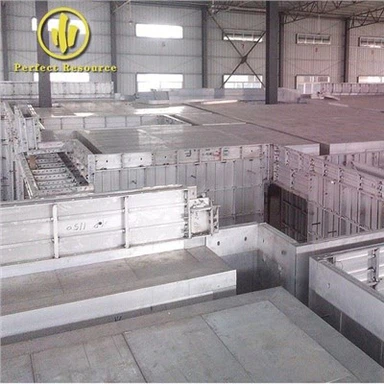Aluminum alloy template functional use
Oct 17, 2024
Aluminum alloy template functional use

The components of the aluminum formwork system need to be designed according to the characteristics of the floor, which requires a high level of competence from the design technicians. About 80% of the modules in the aluminum formwork system can be recycled in multiple projects, while the remaining 20% can only be recycled in one type of standard floor. Therefore, the aluminum formwork system is suitable for highly standardized super high-rise buildings or multi story building clusters and villa clusters. In areas with a high degree of urbanization, the following technological advantages can be particularly reflected: 1) Short construction period. The aluminum formwork system is a quick dismantling system, and a set of formwork can be constructed normally for up to four days per layer. It can also be well deployed for assembly line construction, greatly improving construction progress and saving management costs. 2) High frequency of repeated use and low average cost of use. The aluminum template system uses aluminum alloy profiles formed by integral extrusion as raw materials, and a set of templates can be flipped and used more than 300 times during standardized construction. The purchase price of a set of templates, when averaged, saves a significant amount of cost compared to traditional templates. 3) Convenient construction and high efficiency. The aluminum formwork system is easy and convenient to assemble, with an average weight of around 20kg. It is completely manually transported and assembled without the assistance of any mechanical equipment. Moreover, the system design is simple, and workers can quickly get started and flip the formwork. Skilled installation workers can install 20-30 square meters per person per day, greatly saving labor costs. 4) Good stability and high load-bearing capacity. The bearing capacity of most aluminum formwork systems can reach 60KN per square meter, which is sufficient to meet the formwork bearing capacity requirements of most residential buildings. 5) Widely applicable. Aluminum formwork is suitable for use in positions such as walls, horizontal floor slabs, columns, beams, stairs, window sills, and floating slabs. It is also useful for secondary structural formwork such as ring beams, structural columns, and retaining walls. 6) Less joints, high precision, and good surface effect of concrete after demoulding. After dismantling the aluminum building formwork, the surface quality of the concrete is flat and smooth, basically meeting the requirements of finishing and plain concrete, without the need for batch casting, which can save batch casting costs. 7) On site construction waste is minimal, and the support system is simple. All accessories of the aluminum formwork system can be reused. After the construction and dismantling of the formwork, there is no garbage on site. The support system has a simple structure and is easy to dismantle, so the entire construction environment is safe, clean, and tidy. 8) Strong standardization and universality. Aluminum templates come in various specifications and can be assembled using different sizes of panels according to the project; When renovating a new building with used templates, only about 20 non-standard panels need to be replaced, which can reduce costs. 9) High recycling value. After aluminum formwork is scrapped, when the residual value of waste disposal is high, the cost advantage of equal distribution is obvious. 10) Low carbon emissions reduction. All materials used in the aluminum formwork system are renewable and comply with national regulations on energy conservation, environmental protection, low-carbon, and emission reduction for construction projects.
You Might Also Like
-

Assembled Monolithic Structure Concrete Formwork For Cons...
-

Aluminium Metal Panels With Inflatable Formwork
-

Wholesale Core Wall Formwork Construction Reinforcement A...
-

Accurate Design Suitable For Reuse Slab Wall Pillar Colum...
-

Earthquake-resistant Design Aluminum Profile Accessory Bu...
-

Foshan High Quality Architectural Concrete Molds With Con...

